Books
Books
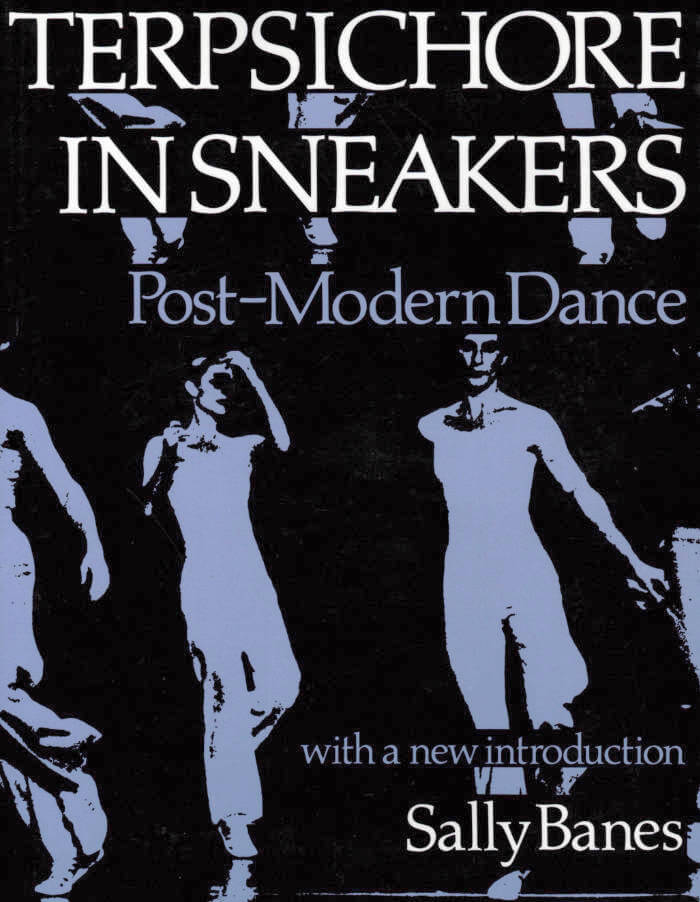
Terpsichore in Sneakers: Post-Modern Dance
Drawing on the postmodern perspective and concerns that informed her groundbreaking Terpischore in Sneakers, Sally Bane's Writing Dancing documents the background and development of avant-garde and popular dance, analyzing individual artists, performances, and entire dance movements. With a sure grasp of shifting cultural dynamics, Banes shows how postmodern dance is integrally connected to other oppositional, often marginalized strands of dance culture, and considers how certain kinds of dance move from the margins to the mainstream.
Banes begins by considering the act of dance criticism itself, exploring its modes, methods, and underlying assumptions and examining the work of other critics. She traces the development of contemporary dance from the early work of such influential figures as Merce Cunningham and George Balanchine to such contemporary choreographers as Molissa Fenley, Karole Armitage, and Michael Clark. She analyzes the contributions of the Judson Dance Theatre and the Workers' Dance League, the emergence of Latin postmodern dance in New York, and the impact of black jazz in Russia. In addition, Banes explores such untraditional performance modes as breakdancing and the drunk dancing of Fred Astaire.

Testo Junkie
What constitutes a real man or woman in the twenty-first century? Since birth control pills, erectile dysfunction remedies, and factory-made testosterone and estrogen were developed, biology is definitely no longer destiny.
In this penetrating analysis of gender, Paul B. Preciado shows the ways in which the synthesis of hormones since the 1950s has fundamentally changed how gender and sexual identity are formulated, and how the pharmaceutical and pornography industries are in the business of creating desire. This riveting continuation of Michel Foucault's The History of Sexuality also includes Preciado's diaristic account of his own use of testosterone every day for one year, and its mesmerizing impact on his body as well as his imagination.

Exo Revue: Si j’aurais su
Sam Bouffandeau, Chloé Delchini and 2 more
Revue du Master de Textes et de Création Littéraire de la Cambre*
Avec les textes de: Sam Bouffandeau, Chloé Clemens, Chloé Delchini, Perrine Estienne, Robin Faymonville, Gabriel René Franjou, Justine Gensse, Adèle Goardet, Bastien Hauser, Giulia Lazzara, Cyprien Muth, Sephora Shebabo.
* Le Master en Textes et Création Littéraire de l’École Nationale Supérieure des Arts Visuels de La Cambre propose un programme de formation aux étudiants qui visent à faire des métiers du texte et de la création littéraire leur avenir professionnel. Il s’adresse principalement aux jeunes écrivains et, plus généralement, à l’étudiant qui souhaite professionnaliser sa démarche artistique en lien avec la pratique de l’écrit en la confrontant à d’autres écrivains, à des éditeurs et à des professionnels reconnus de la littérature, l’informer et l’enrichir de nouveaux savoirs et de nouvelles compétences. Considérant le travail du texte et ses différentes formes comme des expressions majeures de l’homme à travers l’histoire, et les littératures des différents continents comme un art à part entière dans le champ des pratiques artistiques contemporaines, ce Master s’inscrit dans une démarche ouverte de production, de réflexion et d’instruction de l’écrit dans un monde en devenir.
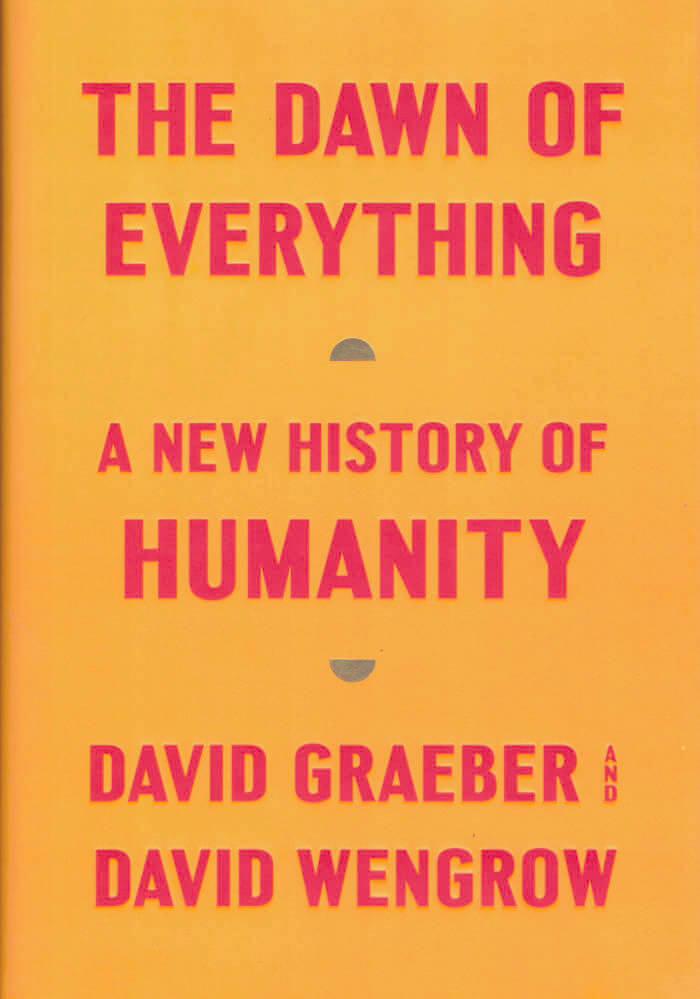
The Dawn of Everything: A New History of Humanity
A dramatically new understanding of human history, challenging our most fundamental assumptions about social evolution — from the development of agriculture and cities to the origins of the state, democracy, and inequality — and revealing new possibilities for human emancipation.
For generations, our remote ancestors have been cast as primitive and childlike — either free and equal innocents, or thuggish and warlike. Civilization, we are told, could be achieved only by sacrificing those original freedoms or, alternatively, by taming our baser instincts. David Graeber and David Wengrow show how such theories first emerged in the eighteenth century as a conservative reaction to powerful critiques of European society posed by Indigenous observers and intellectuals. Revisiting this encounter has startling implications for how we make sense of human history today, including the origins of farming, property, cities, democracy, slavery, and civilization itself.
Drawing on pathbreaking research in archaeology and anthropology, the authors show how history becomes a far more interesting place once we learn to throw off our conceptual shackles and perceive what's really there. If humans did not spend 95 percent of their evolutionary past in tiny bands of hunter-gatherers, what were they doing all that time? If agriculture, and cities, did not mean a plunge into hierarchy and domination, then what kinds of social and economic organization did they lead to? The answers are often unexpected, and suggest that the course of human history may be less set in stone, and more full of playful, hopeful possibilities, than we tend to assume.
"Graeber and Wengrow have effectively overturned everything I ever thought about the history of the world. A thorough and elegant refutation of evolutionary theories of history, The Dawn of Everything introduces us to a world populated by smart, creative, complicated people who, for thousands of years, invented virtually every form of social organization imaginable and pursued freedom, knowledge, experimentation, and happiness way before the "Enlightenment." The authors don't just debunk the myths, they give a thrilling intellectual history of how they came about, why they persist, and what it all means for the just future we hope to create. The most profound and exciting book I've read in thirty years." — Robin D.G. Kelley, Gary B. Nash Endowed Chair in U.S. History, UCLA, author of Freedom Dreams: The Black Radical Imagination
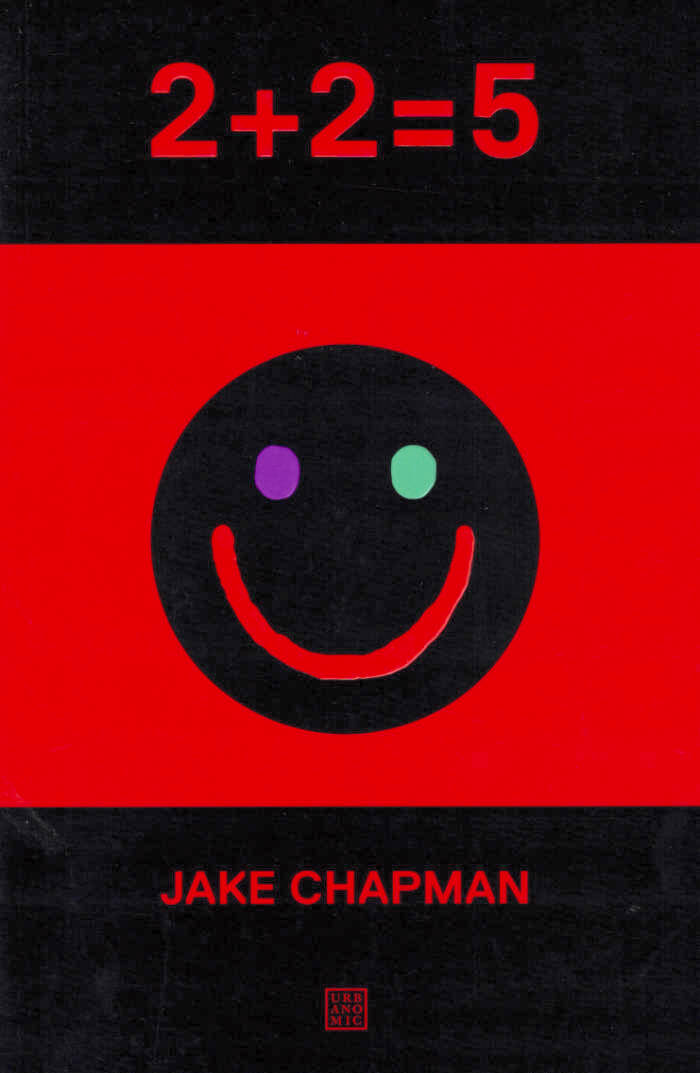
2+2=5
With 2+2=5, George Orwell's flawed masterpiece finally receives a much-needed rectification, as Jake Chapman takes us on a bad trip into an atrocious alt-Eurasia - a nightmare utopia of 24/7 self-expression, mandatory wellbeing, yogic breathing, and promiscuous empathy. Yippie wonks in open-toed sandals have ejected the evil capitalist overlords, compassion and charity reign supreme, buckwheat salad and artisan cashew cheese are in plentiful supply, and all strive to live their best life, all the time.
Employed by the Ministry to rectify misfortunes issuing from a curious glitch in the system, Winston Smith finds that his creative urges are unexpectedly awoken, and he is driven to express his deepest place, voice, and hurt through the medium of poetry. But what connects Winston's furtive scribblings in My Big Book of Me to the unpleasantnesses emanating from the deep glitch? Is Julia really the perfect kooky carefree soulmate she seems to be? Can O'Brien be trusted? And when does the new season of Big Brother start?
An all-you-can-eat quinoa buffet of wrongthink, Chapman's twisted vision is a bracing reminder that dystopia is just wishful thinking, and that the worst can always get worster.
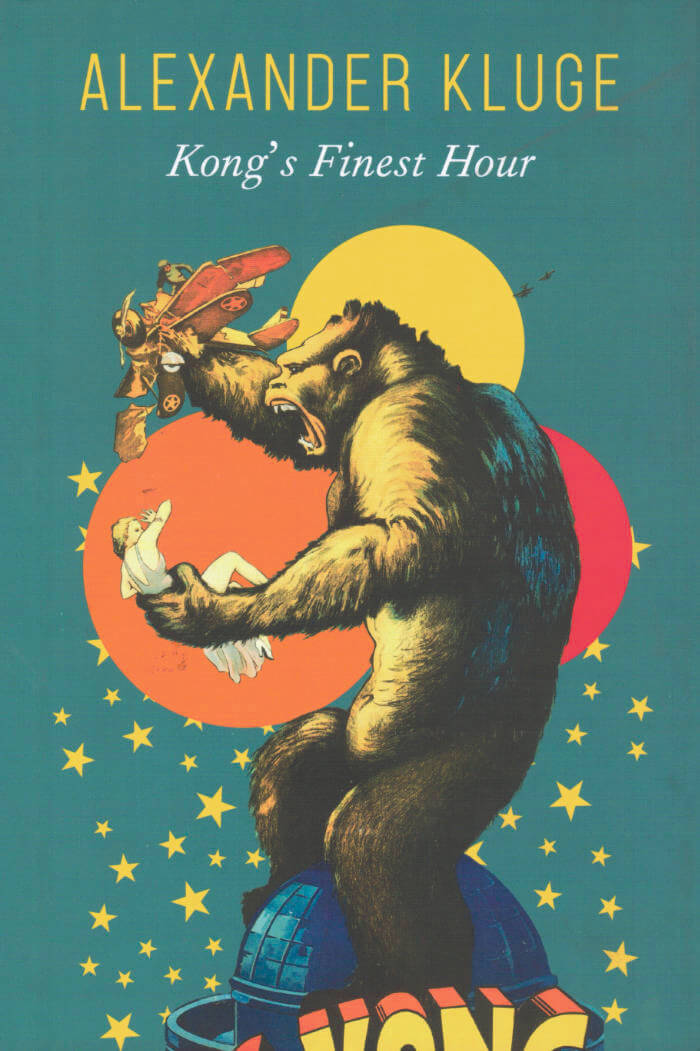
Kong's Finest Hour: A Chronicle of Connections
In a world full of devils, the giant ape Kong defends what he loves the most. But who and what is this undomesticated animal? Might it reside within us? As we tread confidently, is this where the earth opens up beneath us?
In Kong's Finest Hour, Alexander Kluge explores anew the accessible spaces where Kong dwells within us and in our million-year-old past. The more than two hundred stories contained in this volume form a chronicle of connections that together survey these spaces using diverse perspectives. These include stories about the folds of Kong's nose, the voice of the author's mother, the poet Heinrich von Kleist and Jack the Ripper, the indestructability of the political, and the supercontinent Pangaea that once unified the earth. Dissolving theory into storytelling has been Kluge's lifelong pursuit, and this magnificent collection tells stories of people as well of things.

A Poetics of the Press: Interviews with Poets, Printers, & Publishers
The publication of Donald Allen's The New American Poetry in 1960, as well as the Vancouver and Berkeley poetry conferences, sparked a poetic renaissance. It was an era rich in exploration and innovation that articulated a new relationship between form and content. Simultaneously, American artists began working with the book as a creative medium that rivaled the European tradition of the early twentieth century.
This book is the first collection of interviews with some of the pioneers working at the intersection of the artists book and experimental writing that continues to this day.
Includes interviews with Keith & Rosmaie Waldrop, Tom Raworth, Lyn Hejinian, Alan Loney, Mary Laird, Jonathan Greene, Alastair Johnston, Johanna Drucker, Phil Gallo, Steve Clay, Charles Alexander, Annabel Lee, Inge Bruggeman, Matvei Yankelevich, Anna Moschovakis, Aaron Cohick, and Scott Pierce. Co-published with Cuneiform Press.
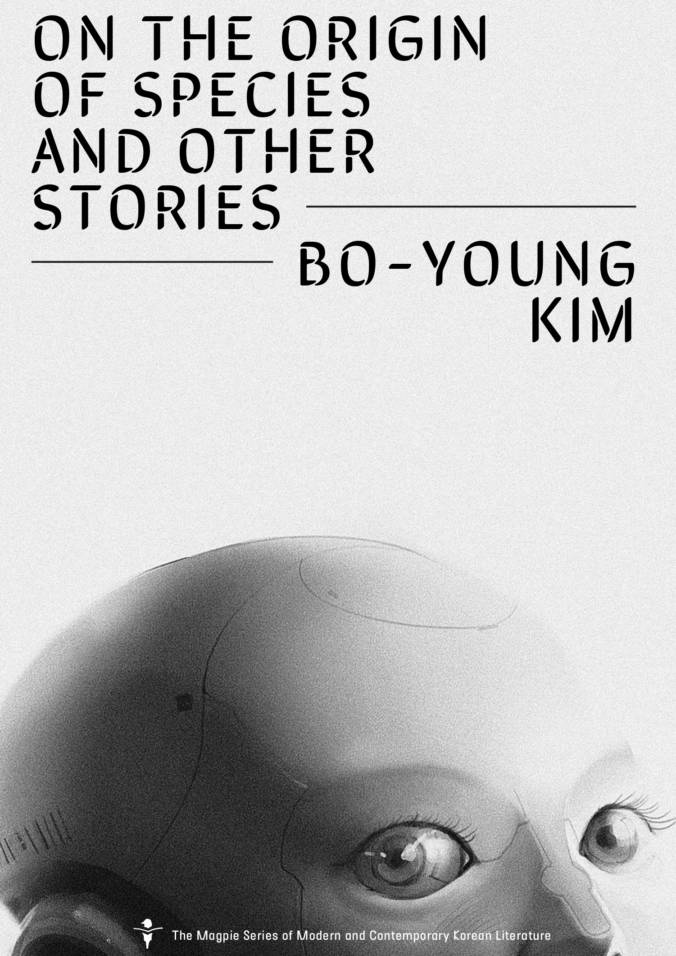
On the Origin of Species and Other Stories
Straddling science fiction, fantasy and myth, the writings of award-winning author Bo-Young Kim have garnered a cult following in South Korea, where she is widely acknowledged as a pioneer and inspiration. On the Origin of Species makes available for the first time in English some of Kim's most acclaimed stories, as well as an essay on science fiction. Her strikingly original, thought-provoking work teems with human and non-human beings, all of whom are striving to survive through evolution, whether biologically, technologically or socially. Kim's literature of ideas offers some of the most rigorous and surprisingly poignant reflections on posthuman existence being written today.
Bo-Young Kim (born 1975) won the inaugural Korean Science & Technology Creative Writing Award with her first published novella in 2004 and has gone on to win the annual South Korean SF Novel Award three times. In addition to writing, she regularly serves as a lecturer, juror and editor of sci-fi anthologies, and served as a consultant to Parasite director Bong Joon Ho's earlier sci-fi film Snowpiercer. She has novellas forthcoming from HarperCollins in 2021. She lives in Gangwon Province, South Korea, with her family.
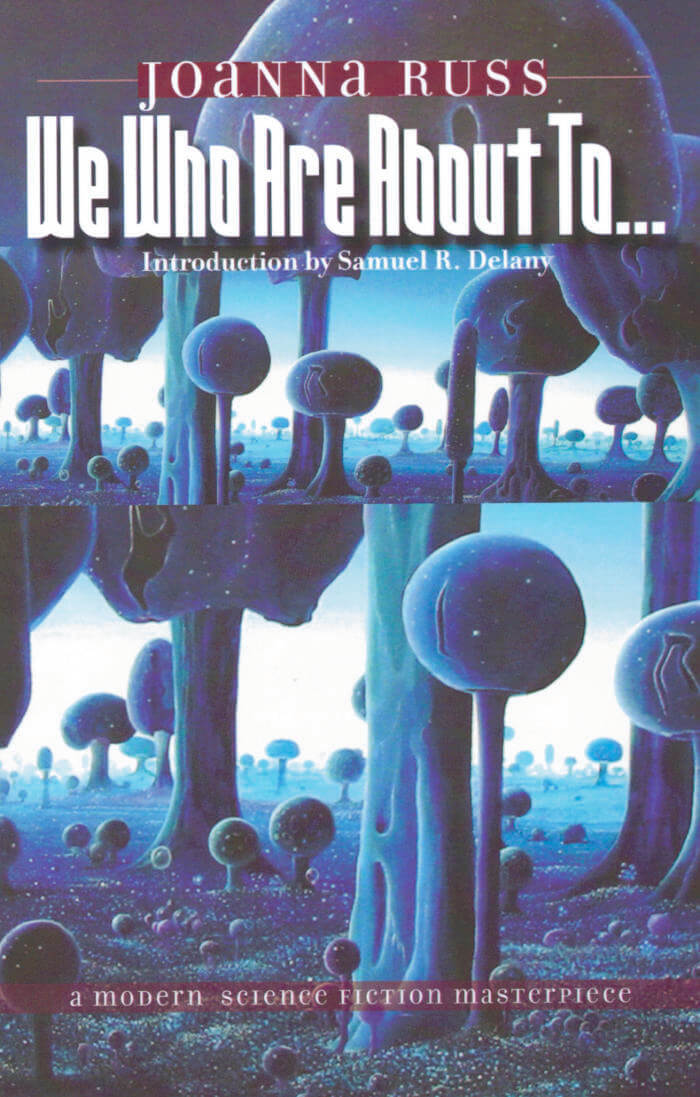
We Who Are About To...
One woman's quest to die with dignity may doom them all.
A multi-dimensional explosion hurls the starship's few passengers across the galaxies and onto an uncharted barren tundra. With no technical skills and scant supplies, the survivors face a bleak end in an alien world. One brave woman holds the daring answer, but it is the most desperate one possible.
Elegant and electric, We Who Are About To... brings us face to face with our basic assumptions about our will to live. While most of the stranded tourists decide to defy the odds and insist on colonizing the planet and creating life, the narrator decides to practice the art of dying. When she is threatened with compulsory reproduction, she defends herself with lethal force. Originally published in 1977, this is one of the most subtle, complex, and exciting science fiction novels ever written about the attempt to survive a hostile alien environment. It is characteristic of Russ's genius that such a readable novel is also one of her most intellectually intricate.
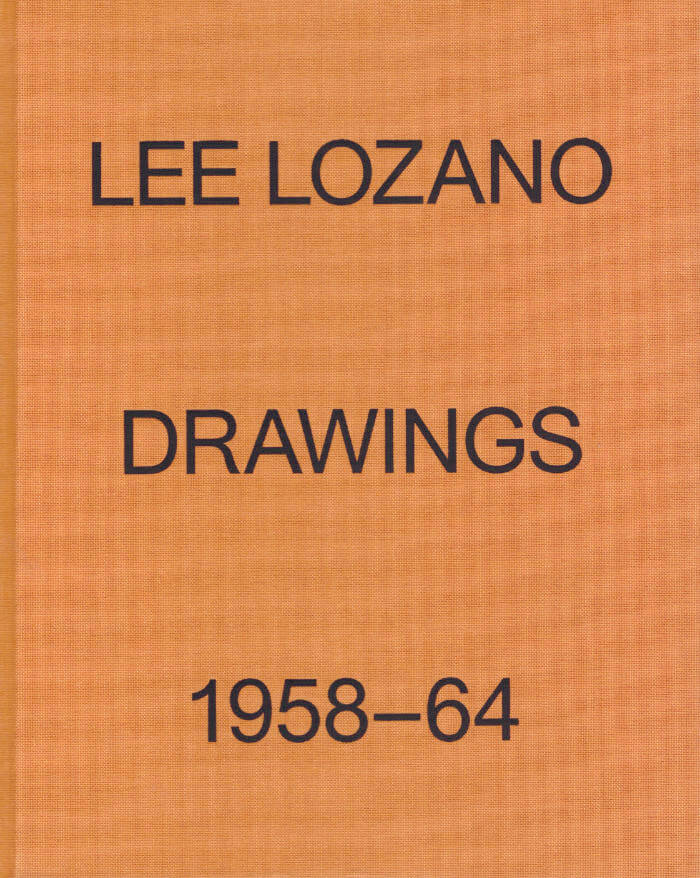
Lee Lozano: Drawings 1958-64
This 640-page volume comprises drawings from a critical six-year period in the development of American painter and conceptual artist Lee Lozano's (1930-99) practice. Her daring, facetious sketches investigate issues of gender and the body through the erogenous anthropomorphization of tools.
Lee Lozano: Drawings 1958-64 includes two newly commissioned essays by Helen Molesworth and Tamar Garb.
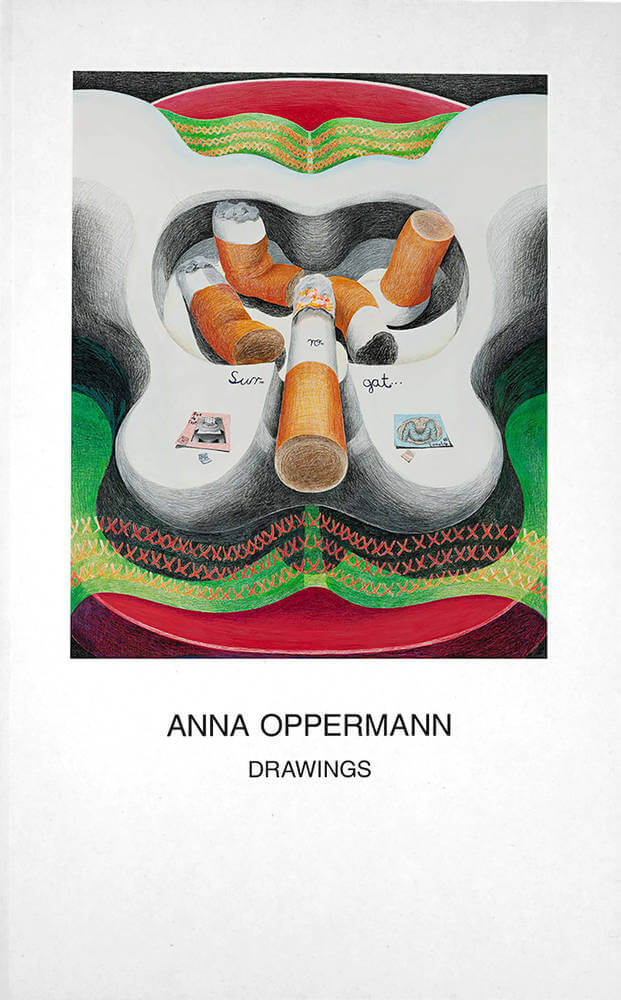
Anna Oppermann: Drawings
Surreal, psychedelic riffs on domestic objects from a trailblazing feminist artist.
From her beginning in the mid-1960s through the early '70s, German artist Anna Oppermann (1940-1993) - best known for her encyclopedic, immersive installations - created an astonishing series of surreal, almost psychedelic drawings that quietly explode the private space of the home, and her experience within it. These early drawings contribute to a feminist reentering of spheres traditionally associated with women, casting everyday objects as symbolic, consequential protagonists: houseplants sprawl to take over the picture plane, windows and mirrors provide views into other worlds and tables display drawings that themselves open out into new domestic scenes. By placing her own body—her knees, arms, the back of her head—as reference points in the work, Oppermann emphasizes the gendered realms of the home and the relationships that we form to our private spaces.
This volume gathers these drawings and early installations in an English-language publication for the first time.

Pasts, Futures, and Aftermaths: Revisiting the Black Dada Reader
The sequel to Pendleton's acclaimed Black Dada Reader, compiling an anti-canon of radical experimentation and thought.
In 2011, artist Adam Pendleton (born 1984) assembled Black Dada Reader, a compendium of texts, documents and positions that elucidated a practice and ethos of Black Dada. Resembling a school course reader, the book was a spiral-bound series of photocopies and collages, originally intended only for personal reference, and eventually distributed informally to friends and colleagues. The contents - an unlikely mix of Hugo Ball, W.E.B. Du Bois, Adrian Piper, Gertrude Stein, Sun Ra, Stokely Carmichael, Gilles Deleuze -formed a kind of experimental canon, realized through what Pendleton calls radical juxtaposition. In 2017, Koenig Books published the Reader in a hardcover edition, with newly commissioned essays and additional writings by the artist. A decade later, Pendleton has composed another reader, building upon the constellation of writers, artists, filmmakers, philosophers and critics that emerged in the first volume.
Source texts by Sara Ahmed, Mikhail Bakhtin, Toni Cade Bambara, Amiri Baraka, Augusto de Campos, Hardoldo de Campos, and Décio Pignatari, Angela Davis, Gilles Deleuze, Julius Eastman, Adrienne Edwards, Clarice Lispector, Achille Mbembe, Philippe-Alain Michaud, Charles Mingus, Piet Mondrian, Leslie Scalapino, Leonard Schwartz and Michael Hardt, Juliana Spahr, Cecil Taylor and Malcolm X.
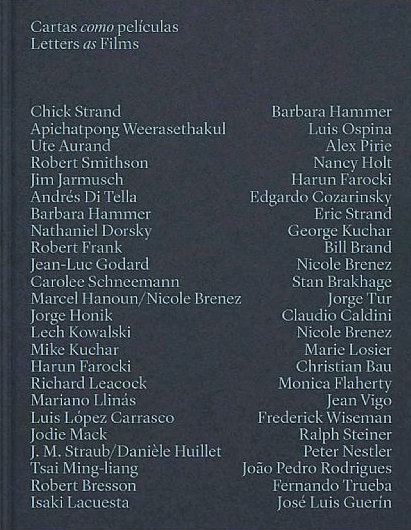
Letters As Films
Fascinating letters and ephemera from experimental filmmakers such as Maya Deren, Nathaniel Dorsky, Jim Jarmusch, Harun Farocki, Jean Vigo and more.
More than 50 postcards, manuscripts, typewritten letters and even emails are presented alongside stills, drawings and storyboards to create a stunning epistolary archive many years in the making. Curator and Punto de Vista International Documentary Film Festival director Garbiñe Ortega has compiled these materials in an effort to "create echoes and reverberations between materials which, as in a film, thanks to the editing, take on another meaning beyond their specific content."
The volume includes correspondence exchanged among filmmakers Jodie Mack, Jonas Mekas, Stan Brakhage, Jorge Honik, Claudio Caldini, Lech Kowalski, Nicole Brenez, Marcel Hanoun, Nathaniel Dorsky, George Kuchar, Nazli Dinçel, Norman McLaren, Maya Deren, Jean Vigo, Richard Leacock, Monica Flaherty, Richard Linklater, Gabe Kingler, Robert Breer, Robert Smithson, Nancy Holt, Fernando Trueba, Jean-Marie Straub, Jim Jarmusch, Hanun Farocki, Robert Frank, Fred Wiseman, Margaret Tait, Ute Aurand, Terrence Malick, Lynne Sachs and Gunvor Nelson.
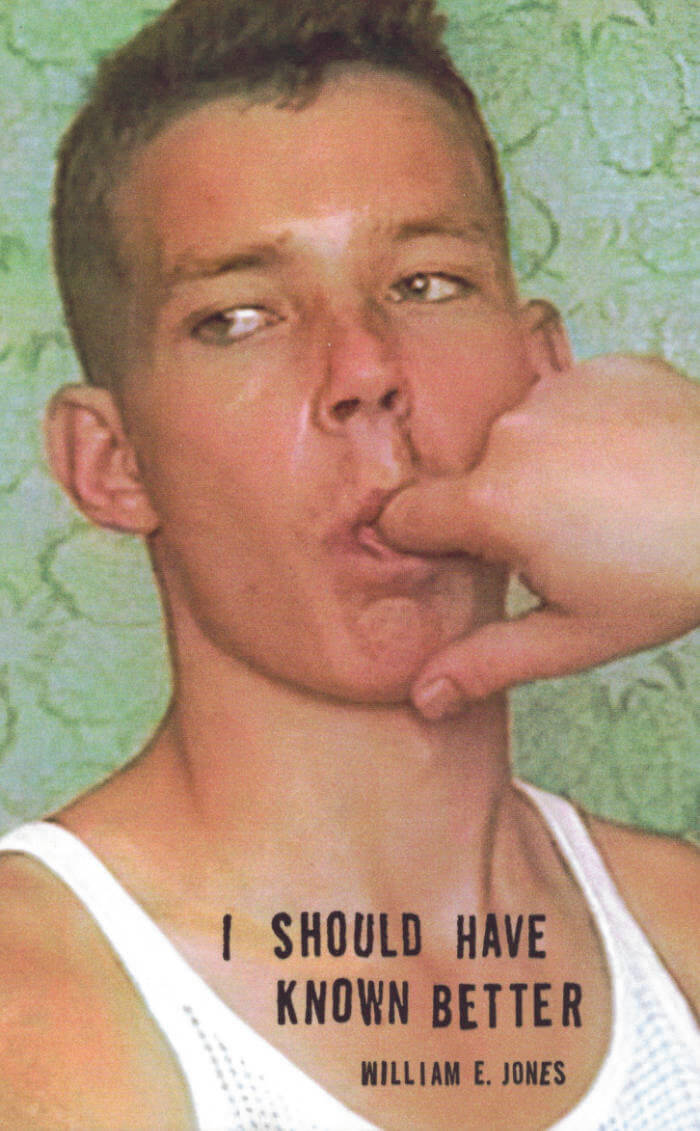
I Should Have Known Better
I Should Have Known Better is a sequel to the sleeper hit I'm Open to Anything (2019), expanding the original's scope and ambition.
I Should Have Known Better's first person narrator, while working at a dead-end job in Los Angeles during the mid-1990s, reconnects with his best friend Moira, recently returned from Central America, and makes a new friend, Bernie, who teaches the history of photography. The two of them convince him to pursue a master's degree as a way of escaping the unrewarding life of a video store clerk. Once the narrator is exposed to an academic environment, he takes a dim view of the education that art school has to offer, but is happy to meet a group of talented fellow students who become close friends. He encounters a number of art world figures, ranging from the brilliant to the abject, who disabuse him of his illusions. The narrator has his most instructive experiences off campus, especially a love affair with the handsome and mercurial Temo, an insolent rich kid who leads a double life. Together they explore their sexual limits in scenes of bracing explicitness. I Should Have Known Better bears witness to the last gasp of Los Angeles bohemia at the end of the twentieth century.
The novel paints precise portraits of inspired eccentrics devoted to pursuing their dreams, "shopping artists" who believe in nothing but hedonism, and latter-day leftists who find themselves directionless after the fall of communism. Above all, the book pays tribute to the impulsive experiments and intense friendships of youth.

I'm Open To Anything
A perverse and explicit new take on the coming of age novel, William E. Jones's I'm Open to Anything explores bohemian Southern California of the late 1980s and early 90s, before gentrification ruined everything.
The book's narrator flees a crumbling industrial wasteland in the Midwest and finds himself in sunny Los Angeles without a car, working in a neighborhood video store and spending many hours watching films. He explores his adopted city and befriends a number of men, most of them immigrants, who teach him the finer points of sex. He acquires the skill of fisting, giving his partners intense pleasure, and at the same time hearing the stories of their lives. They too have fled their hometowns: one to escape torture at the hands of a Salvadoran death squad; another to study anthropology after years of wandering and religious questioning.
Alternating between explicit scenes of kinky sex and intimate conversations about matters of life and death, I'm Open to Anything is a porno novel of rare ambition and humor. The book recalls Olympia Press's heyday, when authors made quick money churning out dirty books, but couldn't hide the intellectual obsessions that made them writers in the first place.
William E. Jones's previous book, True Homosexual Experiences (also published by We Heard You Like Books), a biography of Straight to Hell's iconoclastic editor Boyd McDonald, celebrates the frank, raunchy language of the first queer 'zine. Jones brings the same unsparing and profane attitude to I'm Open to Anything, his debut novel.
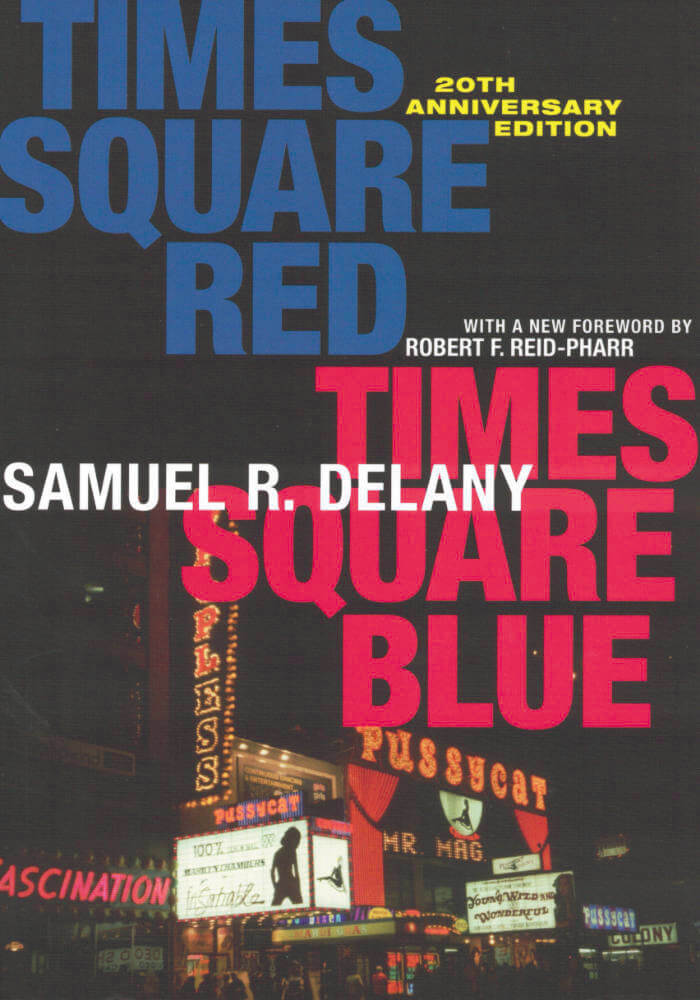
Times Square Red, Times Square Blue
Times Square Red, Times Square Blue is a non-fiction book written by science fiction author Samuel R. Delany and published in 1999 by the New York University Press.
The book is a compilation of two separate essays: Times Square Blue and ...Three, Two, One, Contact: Times Square Red.
This 20th Anniversary Edition contains an introduction by Robert Reid-Pharr.
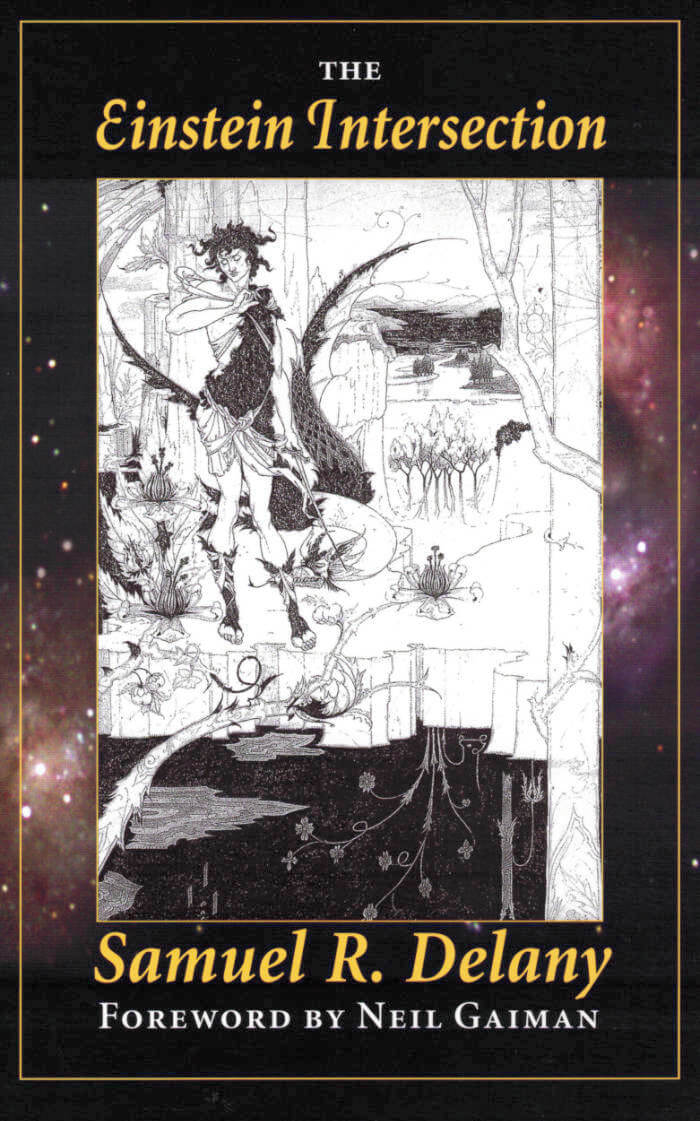
The Einstein Intersection
A nonhuman race reimagines human mythology.
The Einstein Intersection won the Nebula Award for best science fiction novel of 1967. The surface story tells of the problems a member of an alien race, Lo Lobey, has assimilating the mythology of earth, where his kind have settled among the leftover artifacts of humanity. The deeper tale concerns, however, the way those who are different must deal with the dominant cultural ideology. The tale follows Lobey's mythic quest for his lost love, Friza. In luminous and hallucinated language, it explores what new myths might emerge from the detritus of the human world as those who are different try to seize history and the day.

Catalog issue 17 — ‘Introduction’
Catalog is a serial publication about cataloging, written by Lieven Lahaye and designed by Ott Metusala. This is Catalog issue 17, ‘Introduction’, it’s part of a sub-series, researching the life, work and near invisibility of writer Duncan Smith (1954–1991).

Catalog issue 19 — Shimmer, Slice, Accretion
Catalog is a serial publication about cataloging written by Lieven Lahaye and designed by Ott Metusala. This is Catalog issue 19: Shimmer, Slice, Accretion; it’s part of a sub-series on near invisibility. Formally, each publication is an offset-printed A2 sheet folded into a signature. The series will be compiled into a book. This is done in the trust that the presentations, talks and conversations that stem from one issue's publication will influence the next issue. And the next. And the next.

Auditing Intimacy
Office for Joint Administrative Intelligence
Auditing Intimacy is a collection of postal correspondence, photographs and declassified documents produced by Chris Dreier and Gary Farrelly between 2015 and 2020 under the banner of their shared practice The Office for Joint Administrative Intelligence. In a spirit of transparency and full disclosure, the publication contains a certified, independent and critical audit of the practice by Alicja Melzacka. The project was undertaken to commemorate the fifth anniversary of O.J.A.I.
Edited by Chris Dreier and Gary Farrelly
Artworks by Chris Dreier and Gary Farrelly
Essay by Alicja Melzacka
Design by Zero Desk
Documentation by Pauline Miko
Published by Fantôme Verlag
174 pages
Office for Joint Administrative Intelligence is the collaborative practice of artists Chris Dreier (DE) and Gary Farrelly (IRE/BE). The work is fuelled by a recurring obsession with architecture, infrastructure, finance, institutional power and DIY ritualism. O.J.A.I. pursues a strategy of self-institutionalisation where tools and codified rules of engagement are appropriated from economic and political infrastructures for the purposes of structuring intimacy and conjuring autonomy.
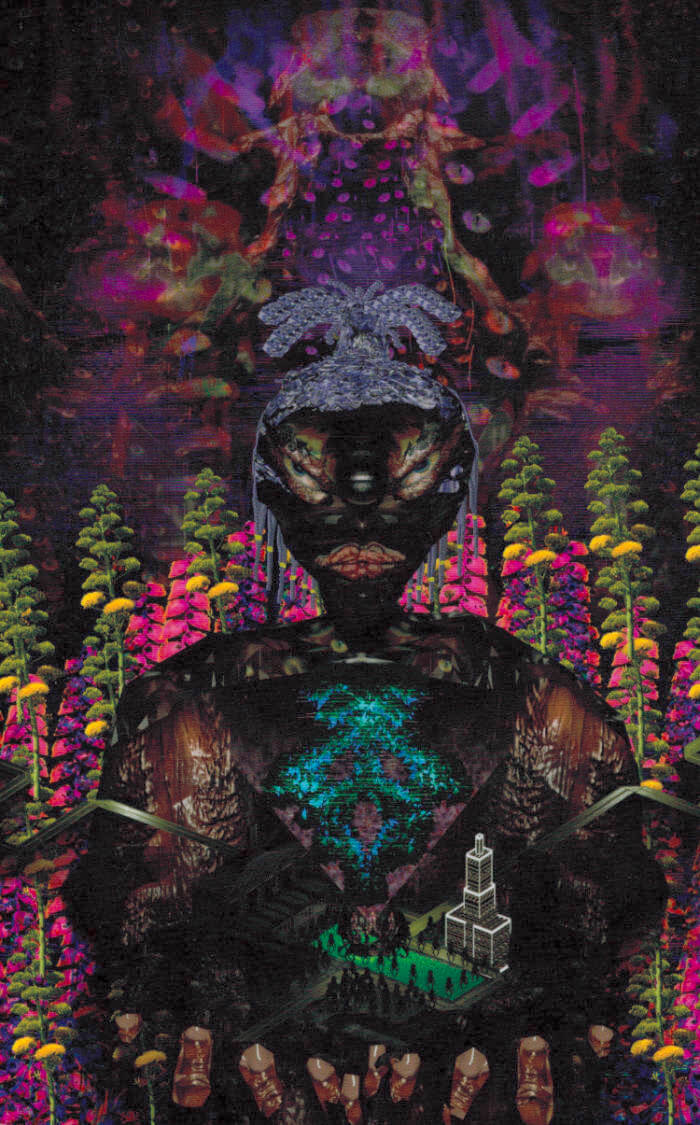
The Virosexuals
Manchester, UK. 2080.
It is a subculture whereby people are sexually attracted to the idea of transmitting and receiving STI’s. It started as a counter-culture against computer algorithms that determine every aspect of people’s lives, from careers to romantic interests, where they live, all over the world. The Virosexuals decided to alter their own bodies in order to subvert the algorithm. Now treated as non humans and thus ignored, Virosexuals like Amygdala are left to survive on their own…
Amygdala’s world consists of: her open relationship with Cel, her philosophical musings and drugged-up rants with her best friend Skunk/Winny, as well as her pursuit of all the completely curable (and thus fetishised) meatspace ‘zeases the club scene can offer. She tries to negotiate her body, her sexuality and her desires and find the source of the ‘Petitmort' threat…!
Amygdala’s dealer ran off on her. She’s out of estrogen, and so when Alejandro offers her a bountiful supply of ‘mones if she works for him – doing what? – she’s not super sure… What she does know: ESCHATOS 2.0 is trying to kill her. There’s a rumour buzzing on The Chat. A deadly virus, nicknamed ‘Petitmort’, is going around. It was manufactured by ESCHATOS 2.0, and maybe only those who have installed the latest update of the Treehouse Link are susceptible. Could Alejandro’s mission for Amygdala be connected to this virus sweeping the underground kink and BDSM scene?
Orion J. Facey's The Virosexuals, the author’s first novel, is a science-fantasy you won’t regret plugging into.
The Book Cover is Artwork by Danielle Brathwaite-Shirley
Design and Typeface by Atelier Carvalho Bernau
Editing by Taylor Le Melle
Copy Editing by Natasha Lall
Production by Daniella Valz Gen, Ima-Abasi Okon and Rehana Zaman
Pages: 280
Dimensions: mm × mm
Published: 30 June 2021

HOOT nr. 3 — Kamilé Krasauskaité
Gufo, Clément Faydit and 1 more
Last year, on a summer night in Marseille, someone, within all the hungry people I am meeting during my dinners, specifically set her attention on my projects. Later during the fall I received a call from Austė ZDANČIŪTĖ, the cultural attache at the Lithuanian embassy in France, who introduced me to Kamilè Krasauskaitè. Since that fall, we kept on exchanging and making future plans in France where she would have a residency. The more we chatted, the closest we began. Kamilè is a almost-thirty-years-old Lithuanian artist that has been including sourdough bread in her work and builds a poetic and mesmerising world around that dimension of food, fermentation, senses, environment, rituals...Through our communication I decided to share that encounter that we managed to welcome in Marseille. We kneaded some bread together, shared it in a forest of Marseillais sunflowers, walked the streets, met people, questioned and compared artists' lives in Europe. This issue might be an excerpt of all the long conversations we had, it was hot and sunny in Marseille, it was in June.
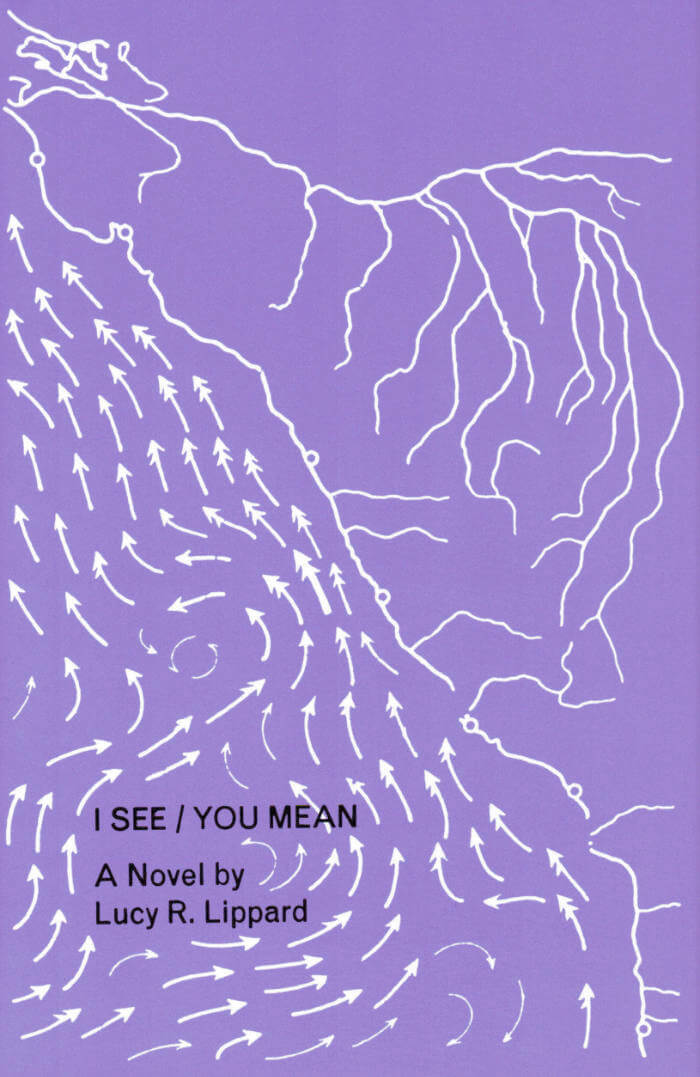
I See / You Mean
I See / You Mean is an experimental novel about mirrors, maps, relationships, the ocean, elusive success, and possible happiness. Through a collage of verbal photographs, overheard dialogue, sexual encounters, found material, and self identification devices (astrology, the I Ching, palmistry, Tarot), it charts from past to future the changing currents between two women and two men: a writer, a model/stockbroker/maybe dictator, a photographer, and an actor. A lot happens between the lines. Art critic Lucy Lippard wrote this novel in 1970 and became a feminist in the process: “I started writing and realized I was ashamed to be a woman. Then I had to find out why. Then I got very angry. The fragmented visual form came out of contemporary art and the conflicting emotions of 1960s political confrontation; they suggested a new way to put things back together—an open-ended, female way that didn’t pretend conclusions.”
Lucy R. Lippard is a writer, activist, and curator. She is the author of twenty-five books on contemporary art and cultural criticism and has curated some fifty exhibitions in the United States, Europe, and Latin America.
Afterword by Susana Torre
Edited by Jeff Khonsary
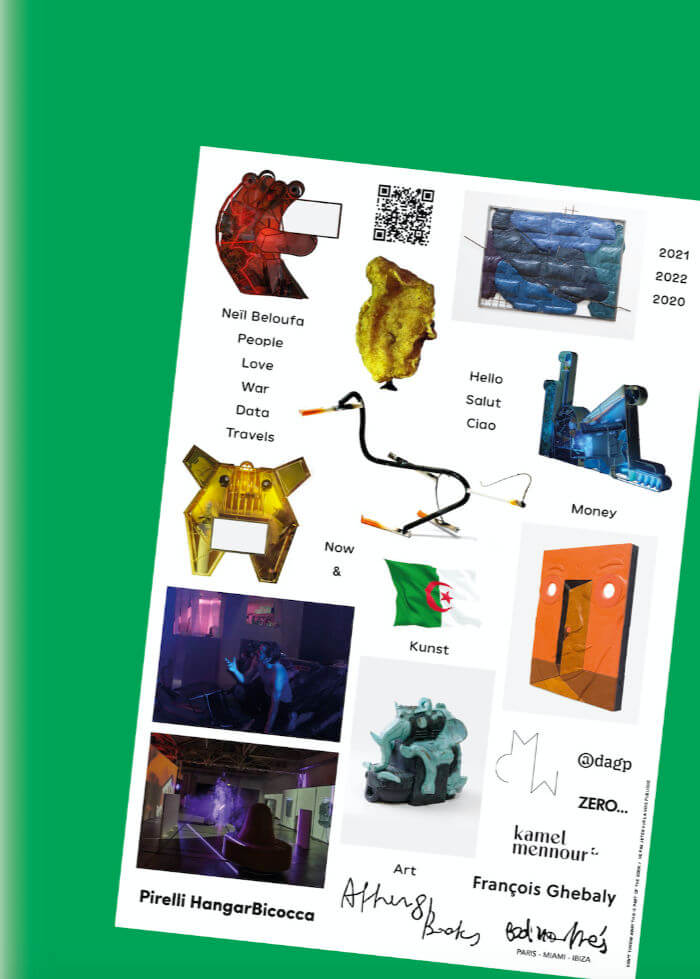
Neïl Beloufa: People Love War Data & Travels
Myriam Ben Salah, Benjamin Thorel
This is the first monograph on the internationally acclaimed French Algerian artist Neïl Beloufa (born 1985). Love, hatred, war, technology, social unrest, bodies and words in crisis: this is the material of which Beloufa’s work is made. His films, sculptures and multimedia installations audaciously explore how art can address today’s issues, challenging contemporary representations of social relationships, power games, and political and economic structures. An artist favoring collaborations over authorship, and responsive strategies over predetermined intentions, Beloufa has invented his own work methods, and a particular approach to the studio.
The catalog presents the artist’s projects over the past 12 years, including recent experiments with online platforms and NFTs; it takes as its starting point Beloufa’s solo show, Digital Mourning, at Pirelli HangarBicocca in Milan, and offers a non-conformist take on the genre of the monograph, thanks to Olivier Lebrun’s playful and inventive book design.
Beloufa’s work has been exhibited at the ICA, London; Palais de Tokyo, Paris; the Hammer Museum, Los Angeles; MoMA, New York; Schinkel Pavilion, Berlin; Schirn Kunsthalle, Frankfurt. He took part in the Venice Biennale in 2013 and 2019. His work is present in public and private collections including the Centre Pompidou, Paris; Museum of Modern Art, New York; Sammlung Goetz, Munich; and Julia Stoschek Collection, Düsseldorf & Berlin.
He is represented by François Ghebaly (Los Angeles / New York), Mendes Wood DM (Sao Paulo / Brussels / New York), kamel mennour (Paris / London), and Zero… (Milan).